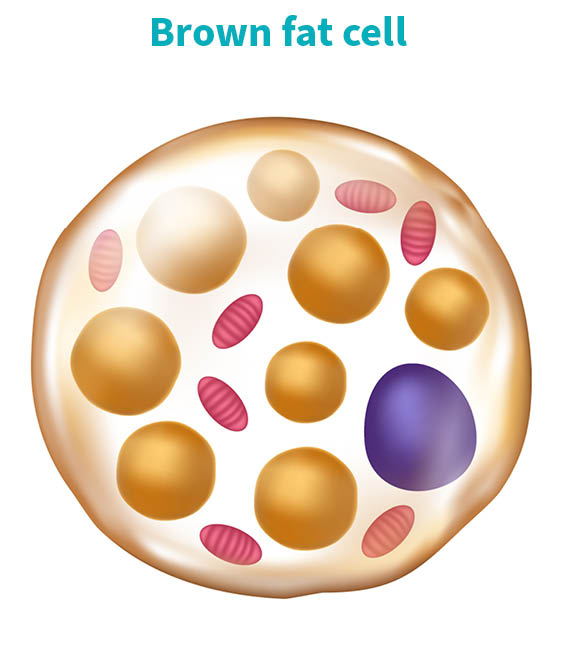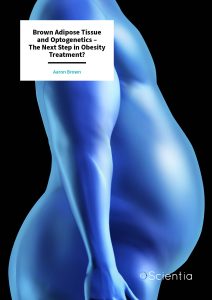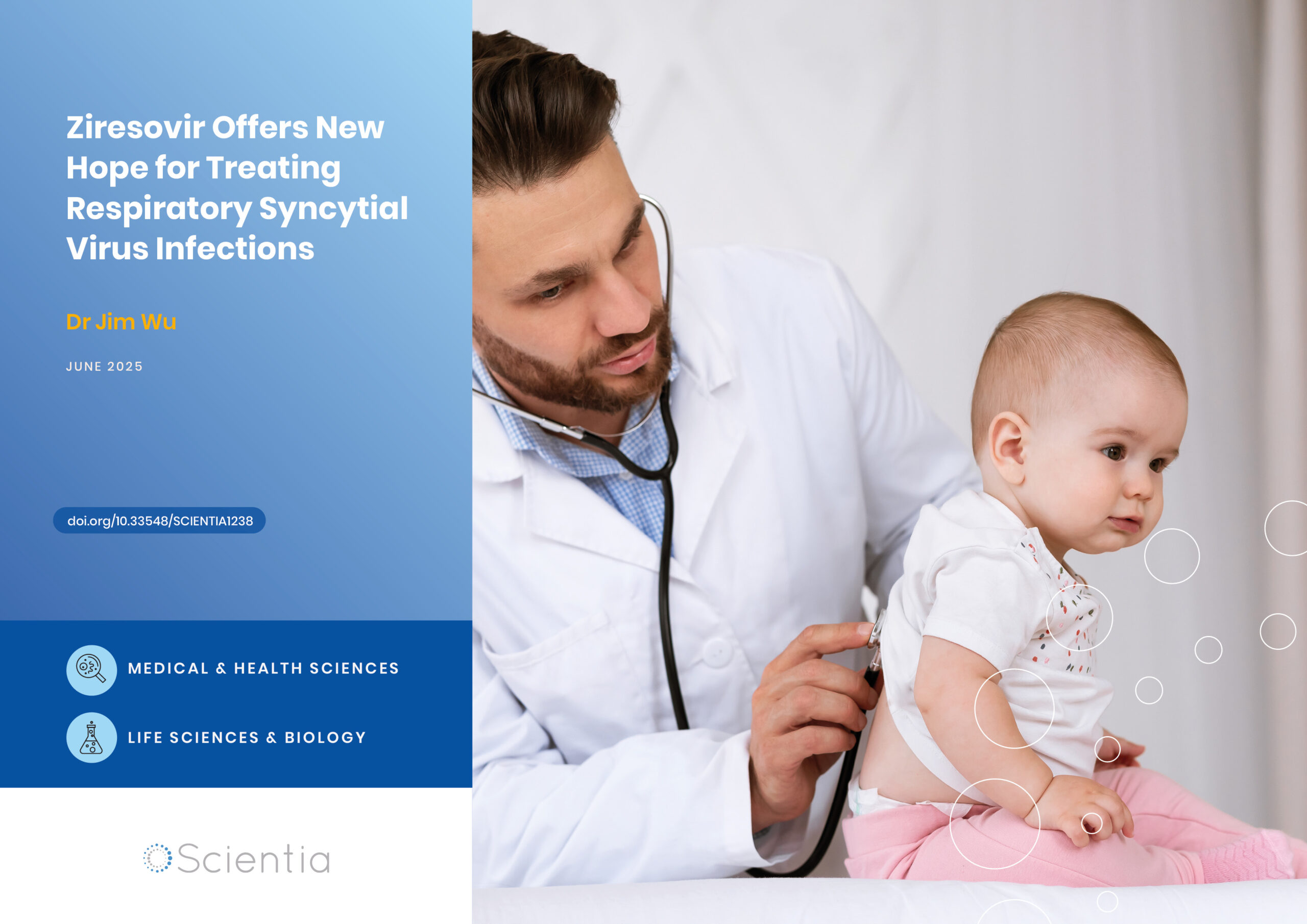Professor Aaron Brown | Brown Adipose Tissue and Optogenetics – The Next Step in Obesity Treatment?
Adipose tissue is more commonly known as body fat. Unlike white adipose tissue, which is linked to negative cardiovascular outcomes such as metabolic syndrome, brown adipose tissue is positively related to health and may reduce the risk of cardiometabolic diseases. Professor Aaron Brown and his team at the MaineHealth Institute for Research are working to understand brown adipose tissue regulation and explore its therapeutic potential. They have already made significant advancements through the application of optogenetics, a cutting-edge technique that harnesses the power of light to precisely manipulate specific cellular processes.
Fat is Fat, Right?
Humans and other animals must consume calories if they are to move and survive. These are obtained from food in the form of carbohydrates, protein and fat. The long-term overconsumption of calories (where more calories are eaten than used) in food leads to these calories being stored as white adipose tissue (WAT), more commonly referred to as ‘fat’. From an evolutionary perspective, storing calories for future use was necessary, as our next meal was never guaranteed. However, as modern humans, with easy access to calorie-rich foods, excess WAT poses a threat to health by increasing the risk of diseases, including obesity, insulin resistance and metabolic syndrome.
Brown adipose tissue (BAT), in contrast, is what is known as ‘metabolically active’. This means it is rich in mitochondria and can generate heat and expend energy, unlike WAT, which acts as long-term storage for calories. Because of these properties, BAT does not pose the same health risk as WAT and is actually cardio-protective, making it a promising target for therapeutic strategies to combat obesity.

BAT – Not Just for Kids
It was initially thought that only babies had BAT, and that it was there to keep them warm, given their high surface area to mass ratio. Over the last decade or so, imaging technology developments have shown us that adult humans also possess BAT, although in much smaller amounts. BAT plays a similar role here, where it expends energy to help keep us warm in cold temperatures, a process called ‘non-shivering thermogenesis’.
This provision of heat occurs via the sensing of the neurotransmitter noradrenaline (norepinephrine for our American readers), which initiates a series of processes that lead to the expenditure of energy by the removal of glucose and fats from the bloodstream and eventually the breakdown of fat stored within BAT. This sensing of noradrenaline (called ‘beta-activation’) also leads to the activation of the uncoupling protein-1 (UCP1) gene, which further increases energy expenditure by heat production via a rise in a molecule that regulates brown fat cell function called ‘cyclic adenosine monophosphate’ or ‘cAMP’.
Professor Aaron Brown from the MaineHealth Institute for Research in the USA explains that these mechanisms of increasing how much energy we burn provide a very promising area for obesity research, which stems from the recognition that traditional weight management approaches, such as diet and exercise, often fall short in delivering sustainable long-term results.
The Challenge with Activating BAT
The challenge, says Professor Brown, is activating these processes to increase energy expenditure on demand. Drug trials attempting to artificially initiate these processes have had limited success. For example, Myrbetriq (a drug used to treat overactive bladders) has been shown to stimulate BAT activity but is unlikely to have any tangible benefits to weight loss at the currently approved safe dosage. Other efforts to activate BAT have been attempted using molecules that directly stimulate beta-activation. However, these often have negative side effects that are not easily reversible and increase the risk of cardiometabolic disease –the opposite effect of what is intended. This price is simply not worth the cost!
The (Blue) Light at the End of the Tunnel
Technological advancement has made new approaches possible, and the state-of-the-art technique of optogenetics might hold the key to unlocking the potential of BAT. Optogenetics uses light to control specific processes of cells via light-sensitive proteins, and previous research has shown that blue light used on specific proteins activates the processes described above and can even lower blood glucose levels. Professor Brown’s research group conducted experiments to see if a more direct approach could be taken by using blue light to activate UCP1 by genetically modifying brown fat cells.
Professor Brown’s team successfully engineered brown fat cells that can be activated by light. They achieved this by harnessing a light-inducible gene derived from a soil-dwelling bacterium. This innovative methodology enabled them to delve into the potential of light-based activation for brown fat cells. They found that stimulating these photo-sensitive cells with blue light led to increased concentrations of cAMP and increased expression of UCP1. These mechanisms are pivotal in initiating heat production within BAT, and, therefore, could be a way to increase energy expenditure.
Professor Brown’s team looked closely at fuel uptake in brown fat cells, finding that glucose and fat uptake was greater in cells stimulated by blue light. Additionally, this light stimulation prompted the release of heat from the cells. Importantly, they also found that brown fat cells deficient in UCP1 did not respond in the same way, as no heat was produced. This exciting finding provides the first elucidation in which UCP1 has been shown to be activatable within brown fat cells using optogenetic techniques and represents a pivotal advancement in our understanding of how UCP1 can be harnessed to generate heat within brown fat cells.
By shedding light on the mechanisms by which brown fat cells can increase energy expenditure through optogenetic activation, Professor Brown’s work paves the way for developing potential therapies to reverse obesity-related disorders. Other recent work has demonstrated that implanting a wireless optogenetic device into mice genetically altered to contain a different type of light-activated cells can protect them against obesity. While these experimental approaches are not yet ready for use in humans, the hope for effective obesity therapies shines brighter than ever.
SHARE
DOWNLOAD E-BOOK
REFERENCE
https://doi.org/10.33548/SCIENTIA961
MEET THE RESEARCHER

Professor Aaron Brown
MaineHealth Institute for Research (formerly Maine Medical Center Research Institute)
Scarborough, Maine
USA
Professor Aaron Brown graduated from the University of Maine in 1994 with an Associate of Arts degree and a Bachelor of Science in Biochemistry. He advanced his laboratory skills and expertise by completing research positions at The Jackson Laboratory in Bar Harbor. Then, he completed a PhD in Biochemistry and Molecular Biology in a joint venture between the University of Maine and The Jackson Laboratory. Professor Brown is currently a faculty scientist at the MaineHealth Institute for Research, where his team is working to create mouse and human models to study brown adipose tissue to elucidate novel therapeutics for obesity. Professor Brown holds two patents arising from his research (US Patent 20,150,275,168 – Culture conditions for expansion of nephron progenitor cells; US Patent 11,279,915 B2 – Methods, compositions and kits for producing beige adipocytes and treating metabolic disorders) and has another patent pending (Methods and system for optogenetic stimulation of adipocytes).
CONTACT
E: aaron.c.brown@mainehealth.org
W: https://mhir.org/?page_id=40183
LinkedIn: https://www.linkedin.com/in/aaron-brown-030b042/
FUNDING
National Institutes of Health (NIH)
Centers of Biomedical Research Excellence (COBRE)
FURTHER READING
AC Brown, Optogenetics Sheds Light on Brown and Beige Adipocytes, Journal of Cellular Signaling, 2023, DOI: 4(4), 178–186. https://doi.org/10.33696/signaling.4.105
CC Doucette, DC Nguyen, D Barteselli, et al., Optogenetic activation of UCP1-dependent thermogenesis in brown adipocytes, iScience, 2023, 26(4), 106560. DOI: https://doi.org/10.1016/j.isci.2023.106560
AC Brown, Brown adipocytes from induced pluripotent stem cells-how far have we come?, Annals of the New York Academy of Sciences, 2020, 1463(1), 9-22. DOI: https://doi.org/10.1111/nyas.14257
S Su, AR Guntur, DC Nguyen, et al. A Renewable Source of Human Beige Adipocytes for Development of Therapies to Treat Metabolic Syndrome, Cell Reports, 2018, 25(11), 3215–3228.e9. DOI: https://doi.org/10.1016/j.celrep.2018.11.037
![]()
REPUBLISH OUR ARTICLES
We encourage all formats of sharing and republishing of our articles. Whether you want to host on your website, publication or blog, we welcome this. Find out more
Creative Commons Licence (CC BY 4.0)
This work is licensed under a Creative Commons Attribution 4.0 International License. 
What does this mean?
Share: You can copy and redistribute the material in any medium or format
Adapt: You can change, and build upon the material for any purpose, even commercially.
Credit: You must give appropriate credit, provide a link to the license, and indicate if changes were made.
SUBSCRIBE NOW
Follow Us
MORE ARTICLES YOU MAY LIKE
How Food Environments Shape Our Eating Habits
How we eat dramatically impacts our health, yet millions of Americans live in ‘food deserts’ – areas with limited access to fresh, nutritious food. Recent research reveals that solving this crisis requires looking beyond just physical access to food to understand how our entire community environment shapes our dietary choices. Through a series of pioneering studies, Dr Terrence Thomas and colleagues at North Carolina A&T State University have been investigating how different aspects of our food environment influence what we put on our plates. Their findings suggest that creating lasting change requires reimagining how communities engage with food at every level.
Dr Jim Wu | Ziresovir Offers New Hope for Treating Respiratory Syncytial Virus Infections
Respiratory syncytial virus (RSV) causes respiratory tract infections in children and adults. While for many patients the outcomes of infection are mild, for others, infection can prove fatal, and there is a lack of effective treatments. Dr Jim Wu from the Shanghai Ark Biopharmaceutical Company in China carries out his vital research to develop new, safe, and effective treatments to tackle this killer.
Dr Sandra Grumelli | The Importance of the Choline in Chronic Lung Infections
People with chronic lung conditions like COPD and cystic fibrosis are vulnerable to lung infections caused by the bacterium Pseudomonas aeruginosa. These infections are often difficult to treat and can cause sudden worsening of symptoms, known as flare-ups or acute exacerbations. While we know P. aeruginosa triggers inflammation and damage in the lungs, much less is understood about how exactly it causes these flare-ups, or how it survives in such a harsh environment. Dr Sandra Grumelli from the Center of Investigations of Respiratory Diseases in Argentina, has explored the role of a common molecule called choline which is released during infection. Using a combination of mouse models and laboratory experiments, she has discovered that choline not only makes breathing harder, it also helps P. aeruginosa adapt to and persist in the lungs. Her research opens up new possibilities for tackling chronic infections by targeting the bacteria’s energy use and the way it responds to its environment.
Can Your Personality Shield Your Mind From Ageing? How being open to new experiences might protect against cognitive decline as we age
Many of us have witnessed the troubling effects of ageing on the mind in older friends or family members – the forgotten names, the misplaced keys, the struggle to solve problems that once seemed simple. For decades, scientists have accepted cognitive decline as an inevitable part of growing older. But what if our personality could protect us from some of these changes? A remarkable 25-year study by Dr David Sperbeck, a neuropsychologist at North Star Behavioral Health Hospital in Alaska, has uncovered compelling evidence that certain personality traits might act as a shield against age-related cognitive decline.





